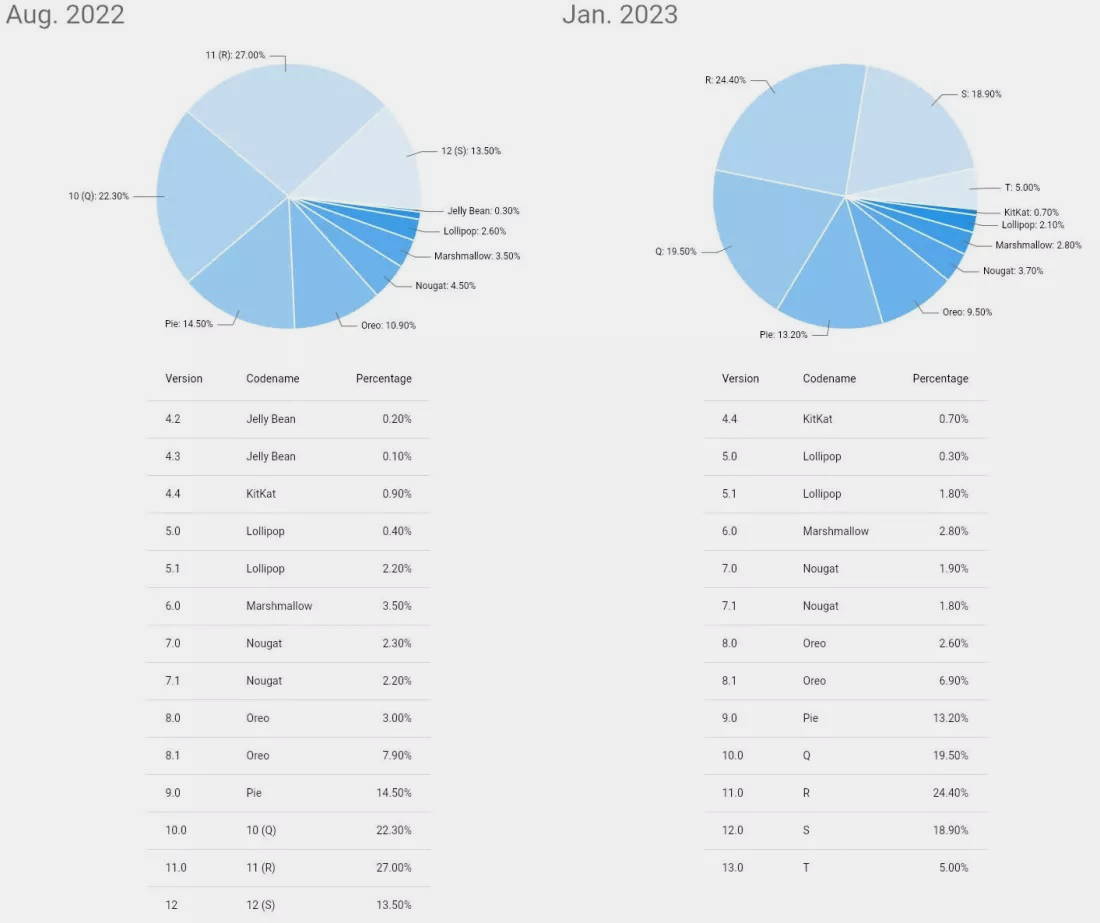Fragmentation in Android: a look at the most used versions
- January 23, 2023
- 0
Fragmentation in Android remains one of the most important problems of this operating system, and it is a reality that has not changed over the years. A few
Fragmentation in Android remains one of the most important problems of this operating system, and it is a reality that has not changed over the years. A few

Fragmentation in Android remains one of the most important problems of this operating system, and it is a reality that has not changed over the years. A few years ago, Google itself was in charge of providing official information with data on the market share that each version had, but in 2018, he decided to limit it and was restricted to internal use.
As a result of that decision reliable tracking was not possible on the adoption rate that different versions of Android had at any given time. Fortunately, as of 2020, 9to5Google has access to this information and publishes it regularly, allowing us to see how the situation has evolved over the past two years.
The latest data available to us is from January 2023, and as we can see in the attached graph, it confirms that in general fragmentation has normalized in Android. This is nothing new, those of you who read us daily know that that fragmentation has long been the general ruleand this is thanks to the fact that Google did not impose the obligation on the big smartphone vendors to update their terminals according to a specific and homogeneous rhythm.

Well, how is the Android ecosystem doing today? Well, as we can see in the attached image, the market share is still very divided. It’s true that there are very old versions that have minimal representation today, but it’s still strange that operating systems like Android Lollipop pile up in their 5.0 and 5.1 versions, a total of 2.1% of the market. Android 9 still maintains a huge 13.20%, in fact it’s a more used version than Android 13, which is the most recent.
They lead the market Android 11 with 24.4%, Android 10 with 19.50% and Android 12 with 18.9%. In total, they reach 62.8%, a figure that would rise to 67.8% if we add the market share of Android 13. This means that almost 70% of smartphones based on Google’s operating system use a version that we can consider “current “, in quotes because Android 10 doesn’t quite fit that qualification, as it was released in 2019, so it’s an operating system that will be four years old in September.
This graph also confirms that the market share growth of each new version of Android It’s usually quite slow. and that eventually many users continue to use your smartphone even if it is outdated at the operating system level and that it is no longer supported. What can I say, this is also a normal thing, because after all, most high-end Android-based smartphones have such powerful hardware that they can maintain excellent performance levels even after several years.
Before concluding, it is important to emphasize that this reality has also led more and more users to start searching alternative operating systems to Android, something difficult, but not impossible, as we told you then.
Source: Muy Computer
Alice Smith is a seasoned journalist and writer for Div Bracket. She has a keen sense of what’s important and is always on top of the latest trends. Alice provides in-depth coverage of the most talked-about news stories, delivering insightful and thought-provoking articles that keep her readers informed and engaged.